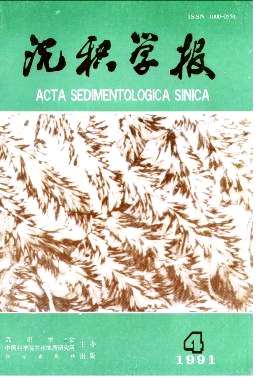Preliminary Study of the Sediments for the Great Wall Bay and Its Adjacent Aera, Antarctica
- Received Date: 1989-11-06
- Publish Date: 1991-12-10
Abstract: In the present paper, the author's discussion focus on the following problems of the surface sediments of the Great Wall Bay and its coast in Antarctica: grain size, minerals, bulk elements, trace elements, REE. environmental factors, organic component, and the feature, zonation and grouping of microfossils. It is pointed out that the sediments of this region, have glacial梞arine action feature and obvious regional differences in grain composition, grain-size distribution, grain-size parameters as well as in grain size curves. The lithologic composition of gravels, the mineral composition of sediments and the content of bulk elements consist with those of basaltic volcanic and subvolcanic rocks of the Fildes Peninsula. The organic constituents in the sediments come mainly from terrestrial higher plant and marine organisms. Based on the grain-size distribution, mineral composition, geochemical indicators, and contents of microfossils in sediments, the study area is divided into three different sedimentary environments:(a)The littoral area of the Great Wall Bay is an erosion-oxidation environment with coarse and bad sorting sediments, lacks of microfossils. The mineral assemblage is simple, and pyrite which indicates reducing environment has been wholery oxidized. The geochemical indicators are characterized by high Fe--- . low Fe++. Oc . N. P, and lack of biosilica. (b)In the area of the Great Wall Bay and South Ardley Bay. sediments are fine to median sorted and contain a lot of diatoms but little foraminifera. Its mineral assemblage is complex, and the content of pyrite is higher. The geochemical indicators are characterized by high Si. Fe++. Oc , N, P. biosilica and low Fe+++, Mg and Ca. showing this area as being a low-energy reduction sedimentary environment. (c)The mouthes of the Great Wall Bay and South Ardley Bay have finer and median sorting sediments and more calcareous-siliceous microfossils. Mineral assemblage where is more complex with little or no pyrite. The geochemical indicators are characterized by high Fe+++and low Fe++. Oc , N. P and biosilica, showing this area as being a weak oxidation environment.
| Citation: | Wang Xianlan. Preliminary Study of the Sediments for the Great Wall Bay and Its Adjacent Aera, Antarctica[J]. Acta Sedimentologica Sinica, 1991, 9(4): 49-58. |






 DownLoad:
DownLoad: